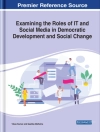Why are some international nongovernmental organizations (NGOs) more politically salient than others, and why are some NGOs better able to influence the norms of human rights? Internal Affairs shows how the organizational structures of human rights NGOs and their campaigns determine their influence on policy. Drawing on data from seven major international organizations—the International Committee of the Red Cross, Amnesty International, Human Rights Watch, Médecins sans Frontières, Oxfam International, Anti-Slavery International, and the International League of Human Rights—Wendy H. Wong demonstrates that NGOs that choose to centralize agenda-setting and decentralize the implementation of that agenda are more successful in gaining traction in international politics.Challenging the conventional wisdom that the most successful NGOs are those that find the ‘right’ cause or have the most resources, Wong shows that how NGOs make and implement decisions is critical to their effectiveness in influencing international norms about human rights. Building on the insights of network theory and organizational sociology, Wong traces how power works within NGOs and affects their external authority. The internal coherence of an organization, as reflected in its public statements and actions, goes a long way to assure its influence over the often tumultuous elements of the international human rights landscape.
विषयसूची
Introduction: Internal Affairs and External Influence1. Salience in Human Rights2. The Importance of Organizational Structure3. Amnesty International: The NGO That Made Human Rights Important4. Other Models of Advocating Change5. Using Campaigns to Examine Organizational and Ideational Salience ConclusionNotes
References
Index
लेखक के बारे में
Wendy H. Wong is Associate Professor of Political Science at the University of Toronto and Director of the Trudeau Center for Peace, Conflict, and Justice at the Munk School of Global Affairs.












